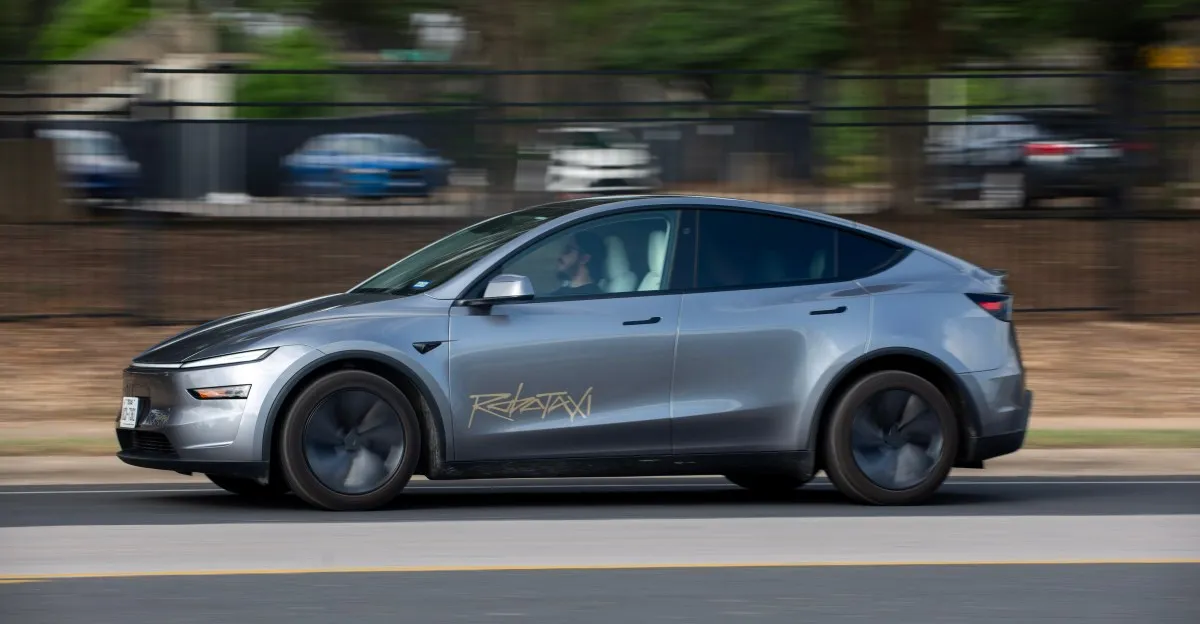
This week, Tesla officially launched its long-awaited robotaxi service in Austin, Texas, but the rollout has already encountered significant challenges. A series of videos surfaced on social media, showcasing the potential dangers of the autonomous vehicle technology. One clip revealed a Tesla robotaxi driving on the wrong side of the road, while another documented a robotaxi abruptly braking in the middle of the street when it encountered stationary police vehicles that were not in its immediate path. A third video illustrated a robotaxi dropping off passengers right in the middle of a busy intersection, raising serious questions about the safety of this new service.
Typically, when a driverless vehicle is involved in a mishap or makes a critical error, the National Highway Traffic Safety Administration (NHTSA) initiates an investigation. Following the recent incidents in Austin, NHTSA confirmed to Bloomberg that it is reviewing the situation and will take any necessary actions to ensure road safety. The concerning nature of these events—driving in the wrong lane, hard braking, and unsafe passenger drop-offs—suggests that Tesla may be under increased scrutiny.
However, the reality may not be as dire for Tesla as it seems. Under the administration of former President Donald Trump, the federal government's ability to effectively regulate autonomous vehicle operators has been significantly weakened. The Department of Government Efficiency, led by Elon Musk himself, has seen the layoff of tens of thousands of federal employees, including numerous safety regulators at NHTSA—the agency responsible for overseeing the safe deployment of robotaxis.
Over the years, consumer protections have been further compromised by a series of right-leaning judicial decisions, including the Supreme Court's ruling on the Chelsea deference. As a result, Tesla is operating in what can be described as a regulatory vacuum, which aligns perfectly with Musk's ambitious plans to deploy “a million” robotaxis on the roads by the end of 2026.
This hands-off regulatory approach isn't unique to the current administration; previous administrations have similarly prioritized "fostering innovation" over stringent regulations for autonomous vehicles. From the Obama administration through the first Trump administration and into the Biden White House, government officials have consistently paved the way for self-driving cars to navigate the roads with minimal regulatory hurdles.
Recently, the US Department of Transportation announced its intention to expedite requests for exemptions from federal safety rules that require autonomous vehicles to include traditional controls like steering wheels, pedals, and mirrors. This includes vehicles like Tesla's upcoming Cybercab. Transportation Secretary Sean Duffy remarked that the exemption process has been “bogging developers down in unnecessary red tape,” which hampers innovation.
The rapid push to exempt automakers from specific safety requirements for self-driving cars raises numerous red flags, particularly regarding Elon Musk, who has often disregarded existing regulations. While Tesla's drive to be the first to market partially autonomous technology has generated billions in revenue, it has also been linked to numerous fatalities. According to a tracking website, at least 58 people have died while using Tesla's Autopilot and Full Self-Driving technologies.
Although NHTSA has launched investigations into Autopilot and issued multiple recalls, its capacity to rein in Tesla is severely limited. Last year, a group of six Democratic senators raised concerns regarding NHTSA's lack of action, questioning why the agency has not mandated the company to disable its partially automated technology to prevent further accidents. The National Transportation Safety Board, NHTSA's sister agency, has also criticized NHTSA for failing to regulate companies like Tesla effectively.
As federal oversight wanes, states are left to navigate the regulatory landscape. For example, California’s Department of Motor Vehicles suspended Cruise’s robotaxi permit following a severe accident that injured a pedestrian. Texas, on the other hand, has fewer safety regulations in place but is making efforts to improve oversight. However, states can only regulate drivers and lack the authority to recall unsafe technologies—an ability held solely by the federal government.
Despite these challenges, Musk has touted the robotaxi launch as a significant success. He stated that if operations run smoothly, we could see thousands more robotaxis on the road soon, possibly reaching “a million” by the end of next year. With limited regulatory barriers in place, it seems that Musk's ambitious vision for the future of autonomous vehicles may continue to advance unimpeded.